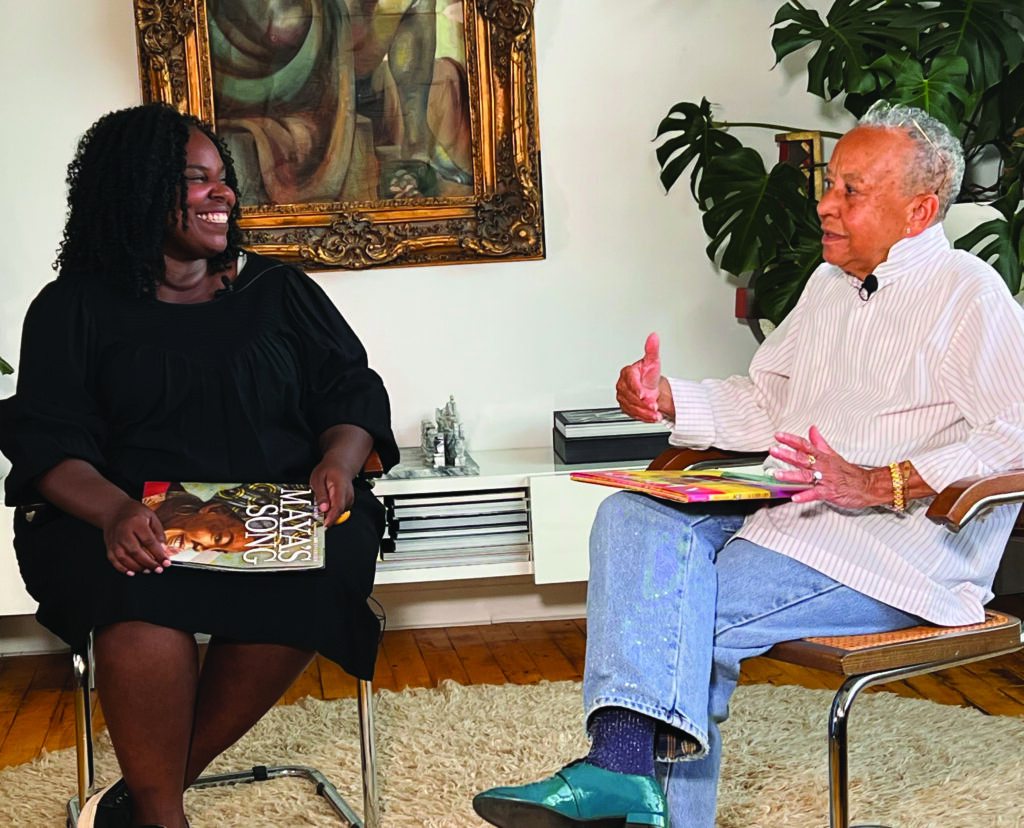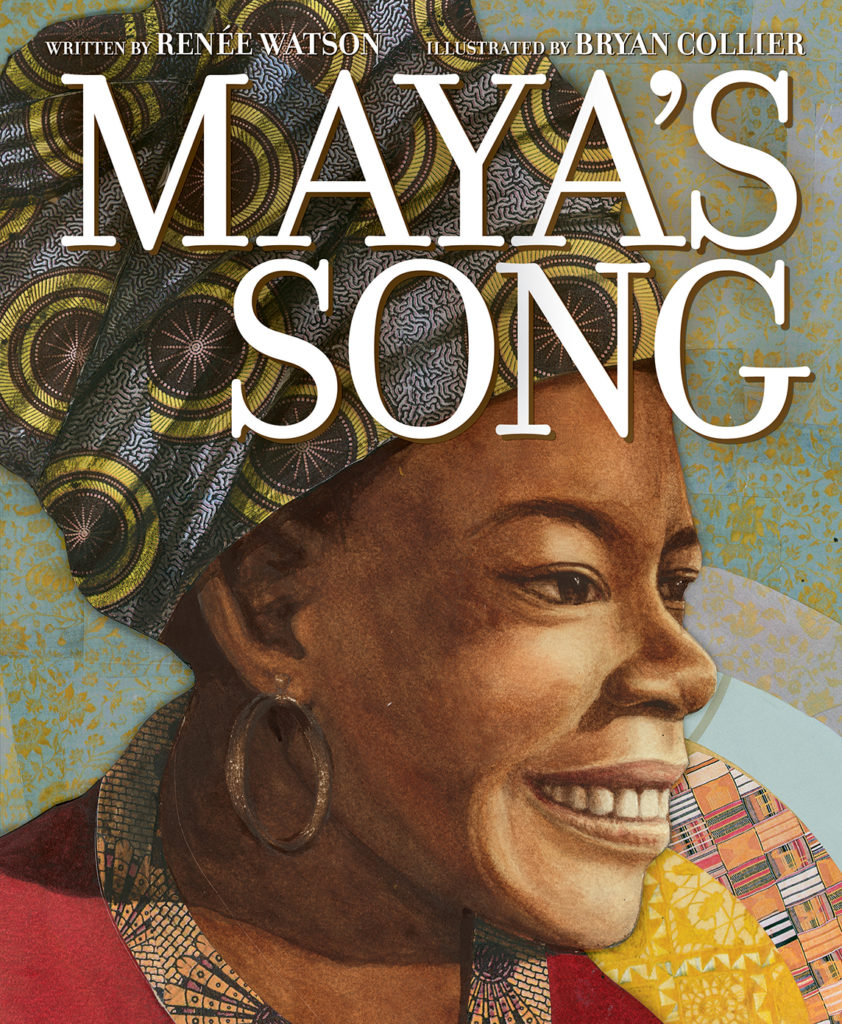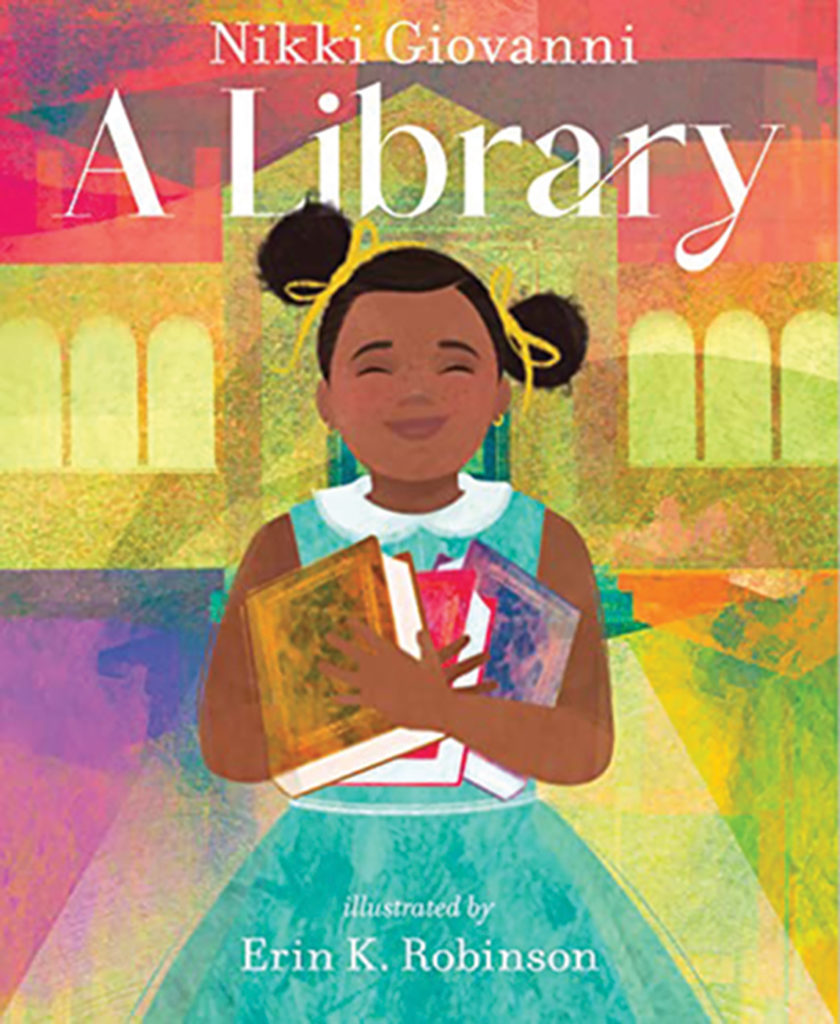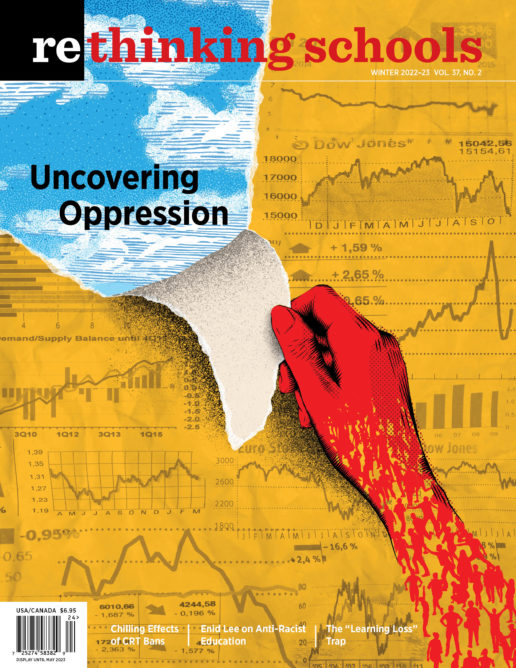Watson and Giovanni Write and Teach About the “Humanity of Black Folks”

In a dialogue in New York City for HarperCollins, Renée Watson and Nikki Giovanni talked about their new picture books, the joy of a writing life, growing up Black, activist librarians and teachers, and they remembered Maya Angelou. Near the end of their conversation, the writers shared a laugh imagining their mothers and grandmothers sitting together on a porch in the afterlife celebrating their daughters’ achievements. Giovanni said, “Heaven must be a mess. All those Black women up there bragging about their children.”
As the writers talked, Watson recalled being a student and encountering “a very white curriculum” in which Black history and experience was presented “usually through the lens of pain and struggle.” She said she needed a fuller story about her people, which she discovered when she read Giovanni’s poetry as a child. “I remember reading your poems like ‘Knoxville, Tennessee’ and ‘The Reason I Like Chocolate.’ Those kinds of poems. Oh, [I thought] these are everyday Black folks. They talk like me. They sound like me. Simple poems that anchor the reader in the humanity of Black folks. And I needed that as a kid.”
Watson’s comments about Giovanni’s work are also true for her writing. An ongoing theme central to both writers’ work is that Black lives are not one-dimensional. Yes, they have been visited by violence and tragedy and inequality, but that is not the whole story. Both Watson and Giovanni continually celebrate the daily joys of being Black, of growing up in a community where family includes neighbors, church folks, librarians, teachers, and books. This sensibility ought to inform our teaching. Both Watson’s Maya’s Song and Giovanni’s A Library are gifts to teachers of all ages — resources we can use with students to teach for Black lives, to help us imagine the kind of world we want to live in, and to prompt students to write their own stories.
Maya’s Song
Watson’s Maya’s Song, illustrated by the award-winning artist Bryan Collier, is the chronicle of Maya Angelou’s life written in verse. Watson tells key stories from Angelou’s history, including accounts of her family members and her years of silence following abuse, as well as her coming into language and storytelling as an artist and activist.
In the opening poem, “Too Grand for His Own Skin,” Watson introduces the reader to Angelou’s father, who returned to Arkansas after fighting in World War I, speaking French, demanding equality, and unwilling to bow his head and “shrink himself till his confidence/ was as tiny as dust.” Instead, he moved the family to California. “No way in the world they could make this grand man small.” His advice to Maya is something all children need to hear: “We are a people of dignity. Don’t ever hold your head down.”
The poem about Maya’s grandmother, “Miss Anne’s Store,” is a praise poem to the family matriarch, who saved money to buy land and a store. In this verse chapter, Watson teaches young readers about the importance of Black ownership. Beyond the creation of a business to earn a living, places like Miss Anne’s store became gathering spots for the Black people in town. Watson’s poetic description brings her audience to Stamps, Arkansas, to the Whites Only signs, but also to the beauty of a community that helped raise and educate Angelou. “On Saturdays, barbers set up in the shade of the porch./ The men told tall tales, trying to outdo each other./ Who was the bravest? Who was the strongest?/ Troubadours moaned their songs/ and played cigar-box guitars./ . . . Maya saw what love looked like up close.”
Watson doesn’t shy away from the violence against Blacks during the Jim Crow era. In the poem “When Night Came,” she tells the story of the night the Ku Klux Klan came for Maya’s Uncle Willie, but she also shows the bravery and ingenuity that Black people demonstrated. Maya and her brother hid their uncle in a crate, piling vegetables on top of him, “but surely whatever meal they’d cook/ with those potatoes and onions would taste like sadness, like fear,/ after being soaked in Uncle Willie’s tears.”
Over a series of several poems, Watson explores the sexual abuse that pushed Angelou into silence. The violence against Maya’s body is age-appropriate, but clear:
When Maya was 7 years old,
her mother’s boyfriend
hurt her body, hurt her soul.
Don’t tell nobody, he said. Don’t
say a word.
What is also clear is that “some secrets shouldn’t be kept inside.” Maya’s silence lasted five years. “Maya kept all the words she knew to herself./ No more feeling the buzz of the B vibrate her lips,/ no tongue against her teeth/ to say thank you or I love you.”
As a poetic interlude, Watson’s poem “What Words Do” makes a great stopping point for students to write their own poetry about what words do. By turns playful and sad, Watson helps the young reader feel Maya’s silence, but also imagine it:
Sometimes words itch the tongue,
beg to come out,
rise but then get swallowed
by fear,
by shame . . .
Sometimes words are patient.
Like tiny seeds they wait underneath the soil.
They are in no hurry, no rush.
When it’s time, they will bloom.
The images of words itching, begging, rising, nesting, tapping, knowing, becoming seeds lend themselves to an imaginative writing journey as students explore other verbs illustrating their own vision about the work of words. After reading this piece, students can write their own poems about words. What verbs would they use? What metaphors? Over the years, my students have described the ways poetry/words hop on the porch to chat with their grandmother, smuggle under the bed covers at night with a flashlight, light up freeway signs.
The final chapters tell of the rebirth of Maya’s voice through poetry, which helped her build a new world, but also of her work as an artist to support the son she gave birth to at 16, her travels to Africa, and her friendships with James Baldwin, Martin Luther King Jr., and Malcolm X as well as her activism: “Their friendship was an anchor. Kept them steady./ Kept them trusting that a change was going to come./ Freedom was coming, coming soon.” After the assassinations of King and Malcolm X, James Baldwin “refused to let her keep her words inside.” In the poetic chapter “Rising,” friends encouraged Angelou to write the childhood stories she told at dinner parties with friends. Those stories became her celebrated autobiography I Know Why the Caged Bird Sings. And once again, Watson gives teachers an opportunity for students to tell their own stories by examining the list of stories that Angelou wrote about her life:
She wrote about all of the joy
and the sad times.
She wrote about all of the
cities she called home.
She wrote about her family
and friends
who were no longer alive to tell
their own stories.
She carried them with her every
time her pen touched paper.
She was writing her story and
their stories too.
Just as Watson heard the people from her family and neighborhood and church in Giovanni’s poetry, students can hear the stories of their families and their neighborhoods in this story. What friendships anchor them? What can they write about joy and loss? Watson’s text can help students chronicle their own lives.
A Library
Nikki Giovanni’s A Library, beautifully illustrated by Erin K. Robinson, is an ode to libraries. As Giovanni and Watson unwrap their newly published books during their dialogue, they talk libraries and librarians. Giovanni says, “You go to library because you’re safe, because you got the books and the books themselves open up another whole world to you.”
Giovanni’s bold dreams and humor appear throughout the book as she catalogs the wonders of a library and the ways a child can imagine themselves in the world. “A library is:/ a place to be free/ to be in space/ to be a cook/ to be a crook/ to be in love/ . . . to be quick and smart/ . . . to surf the rainbow/ to sail the dreams/ to be blue/ to be jazz . . . ”
Like Maya’s Song, A Library provides a wonderful read-aloud for students, but it also provides a poetic framework for children to write their own place poems. Teachers can help notice how Giovanni shows her love of the library and the kind of joy she found there. Students could list their favorite places, then choose one of those places and list what can happen there. For example, I might write “A river is: a place to take a roller coaster ride on an inner tube, to be a fish or an eel, to be blanketed by water, to snuggle on warm rocks . . . ” Following in Giovanni’s path, I might throw in a few surprises like the crook or jazz. I would use both books with elementary through high school students as poetic models, perhaps even encouraging them to illustrate their poems with collages or photos.
Giovanni’s poem is joyful, full of light colors and warm details. However, Giovanni, like Watson, doesn’t hide the painful backstory of the library. In her conversation with Watson, Giovanni goes into greater detail about the humiliation and derision her first librarian, Mrs. Long, faced across town. At the end of her book, Giovanni writes about what Mrs. Long went through to get her readers books from the white library across town. “I grew up during the age of segregation and would want to read books that were not in the Carnegie Branch Library of the Lawson McGhee Library, which was the colored library. Books by Walt Whitman or Alfred North Whitehead. Mrs. Long would go up to the main library to get them for me. I was almost grown before I understood what she must have gone through to get me the books I was interested in. Mrs. Long always knew what I needed.”
From these two books and both authors’ oeuvre, our students need to understand that we can both love and critique. That history and people’s lives are complex, full of injustice, but also full of acts of courage and compassion. We need to trust that children can read books that do not diminish suffering, but instead let that suffering exist next to joy and laughter.



